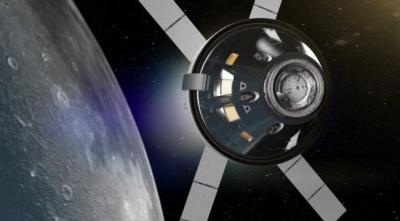Tue, May 02, 2017
GAO Finds Technical Challenges Are Leading To More Delays
The Government Accountability Office (GAO) has released a report saying that the first launch of NASA's SLS rocket will likely not happen until sometime in 2019 due to technical challenges with the massive launch system.

According to the report, NASA's three human exploration programs—Orion Multi-Purpose Crew Vehicle (Orion), Space Launch System (SLS), and Exploration Ground Systems (EGS)— are making progress on their respective systems, but the EM-1 launch date is likely unachievable as technical challenges continue to cause schedule delays.
All three programs face unique challenges in completing development, and each has little to no schedule reserve remaining between now and the EM-1 date, meaning they will have to complete all remaining work with little margin for error for unexpected challenges that may arise.
The programs all face challenges that may impact their remaining schedule reserve. For instance:
- the Orion program’s European Service Module is late and is currently driving the program schedule;
- the SLS program had to stop welding on the core stage—which functions as the SLS’s fuel tank and structural backbone—for months after identifying low weld strengths. Program officials stated that welding resumed in April 2017 following the establishment of a corrective action plan;
- the EGS program is considering performing concurrent hardware installation and testing, which officials acknowledge would increase complexity; and
- each program must integrate its own hardware and software individually, after which EGS is responsible for integrating all three programs’ components into one effort at Kennedy Space Center.

The GAO says in the report that low cost reserves further intensify the schedule pressure. Senior NASA officials said they are analyzing the launch schedule and expect that the EM-1 date will have to slip, but they have yet to make a decision on the feasibility of the current date or report on their findings. With budget discussions currently ongoing for fiscal year 2018, the last year prior to launch, Congress does not yet have insight into the feasibility of the EM-1 launch date, or the repercussions that any cost increase or delays could have in terms of cost and schedule impacts for NASA’s entire portfolio. Unless NASA provides Congress with up-to-date information on whether the current EM-1 date is still achievable, as of the time the agency submits its 2018 budget request, both NASA and Congress will continue to be at risk of making decisions based on less than the entire picture and on likely unachievable schedules.
The GAO recommended that NASA should confirm whether the current EM-1 date is still achievable no later than as part of its fiscal year 2018 budget submission, and propose a new, realistic EM-1 launch readiness date, if warranted, and report its findings to Congress. NASA concurred with both recommendations and agreed that EM-1 will be delayed.
(Images from file)
More News
Light Gun A handheld directional light signaling device which emits a brilliant narrow beam of white, green, or red light as selected by the tower controller. The color and type of>[...]
“We have performed extensive ground testing by comparing warm up times, full power tethered pulls, and overall temperatures in 100 degree environments against other aircraft >[...]
While Taxiing To Parking The Right Landing Gear Leg Collapsed, Resulting In Substantial Damage Analysis: The pilot made a normal approach with full flaps and landed on the runway. >[...]
From 2014 (YouTube Edition): Exotic Rebuild Reveals Aerial Work Of Art During EAA AirVenture 2014, ANN's Michael Maya Charles took the time to get a history lesson about a great ai>[...]
Also: Project Talon, McFarlane Acquisition, Sky-Tec Service, JPL Earth Helo Tests Bombardier has earned a round of applause from the business aviation community, celebrating the fo>[...]
 ANN's Daily Aero-Term (12.13.25): Light Gun
ANN's Daily Aero-Term (12.13.25): Light Gun Aero-News: Quote of the Day (12.13.25)
Aero-News: Quote of the Day (12.13.25) NTSB Final Report: Gippsland GA-8
NTSB Final Report: Gippsland GA-8 Classic Aero-TV: Historically Unique -- Marlin Horst's Exquisite Fairchild 71
Classic Aero-TV: Historically Unique -- Marlin Horst's Exquisite Fairchild 71 Airborne 12.12.25: Global 8000, Korea Pilot Honors, AV-30 Update
Airborne 12.12.25: Global 8000, Korea Pilot Honors, AV-30 Update




